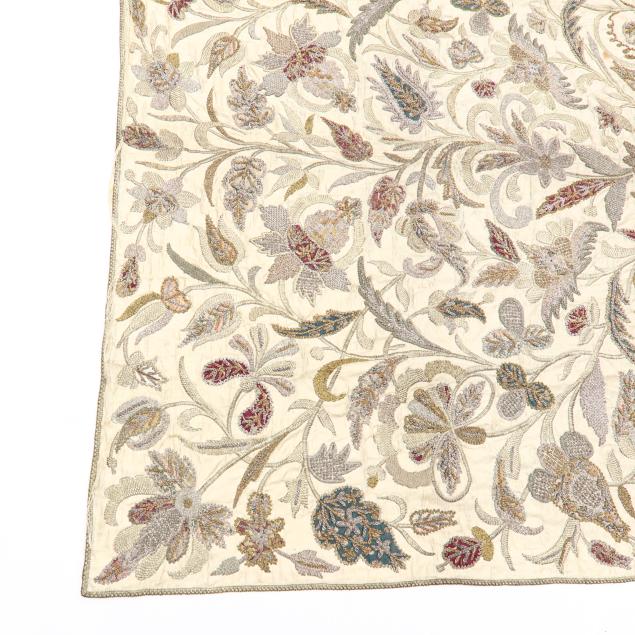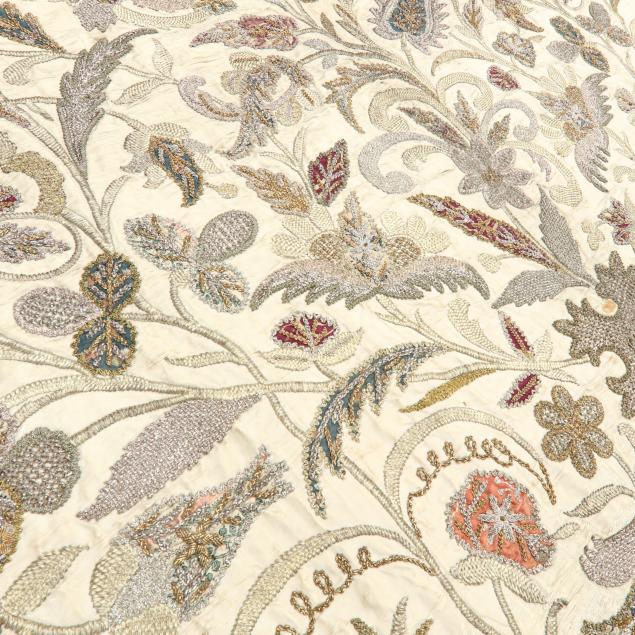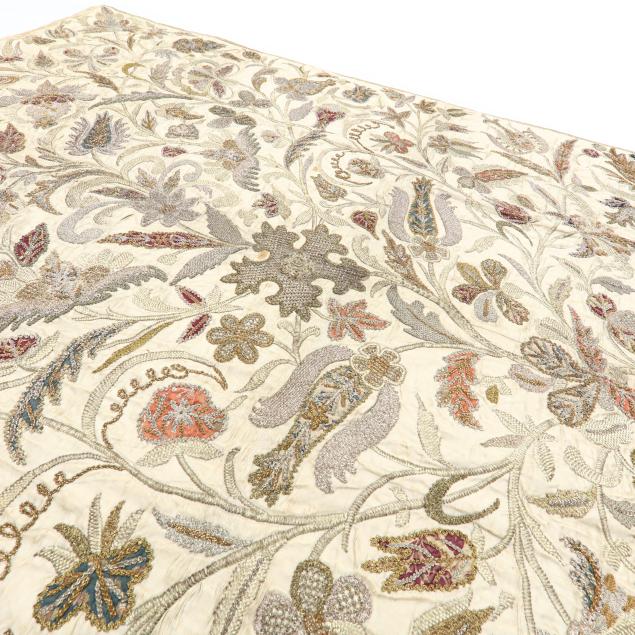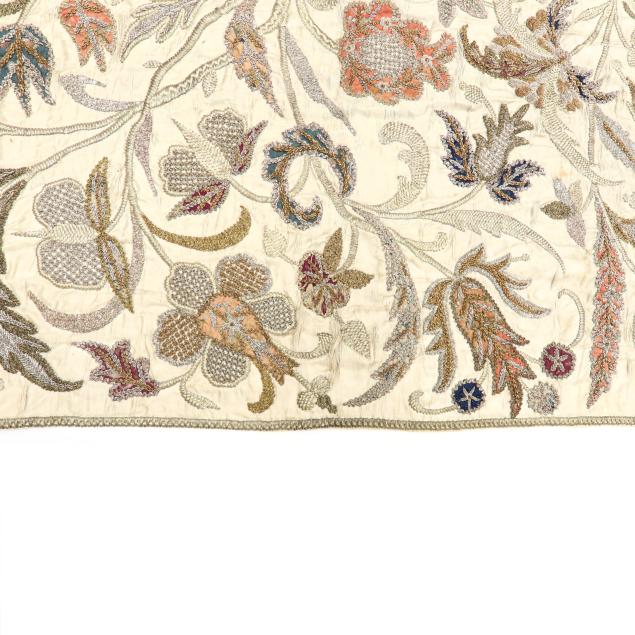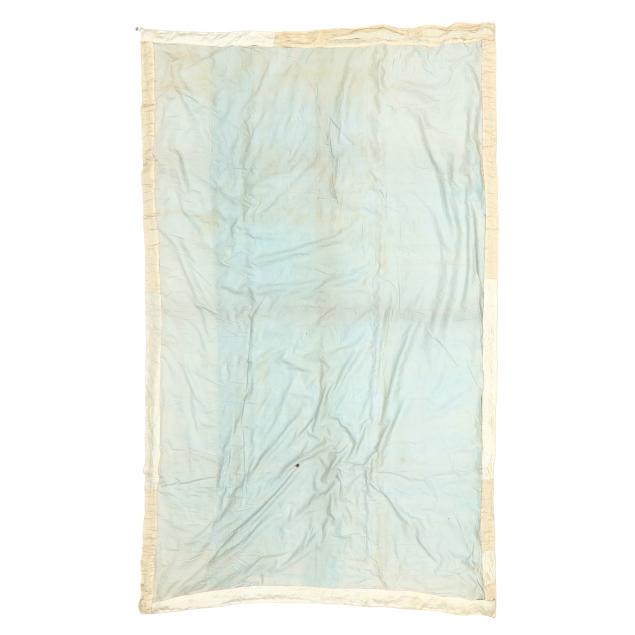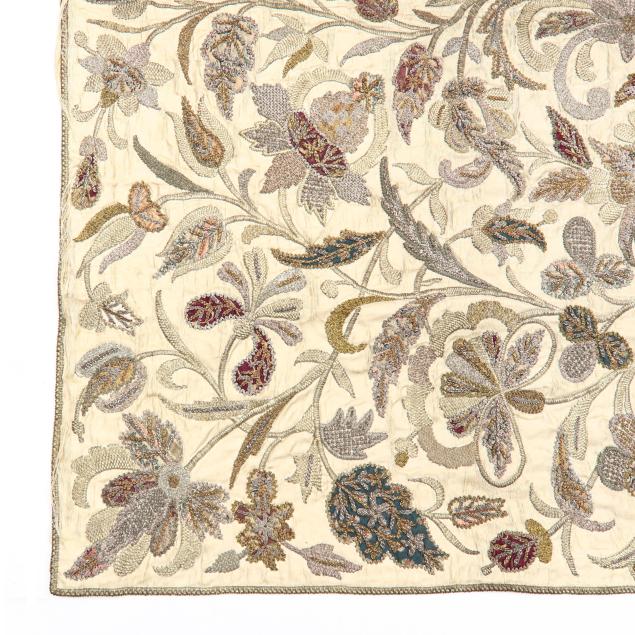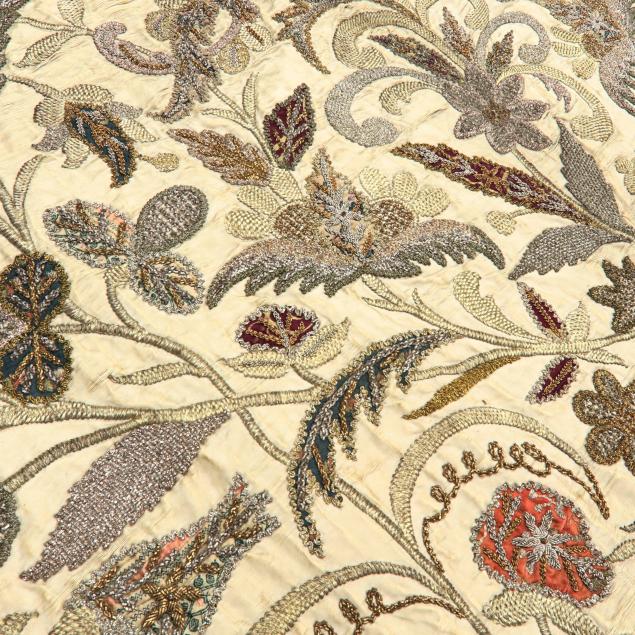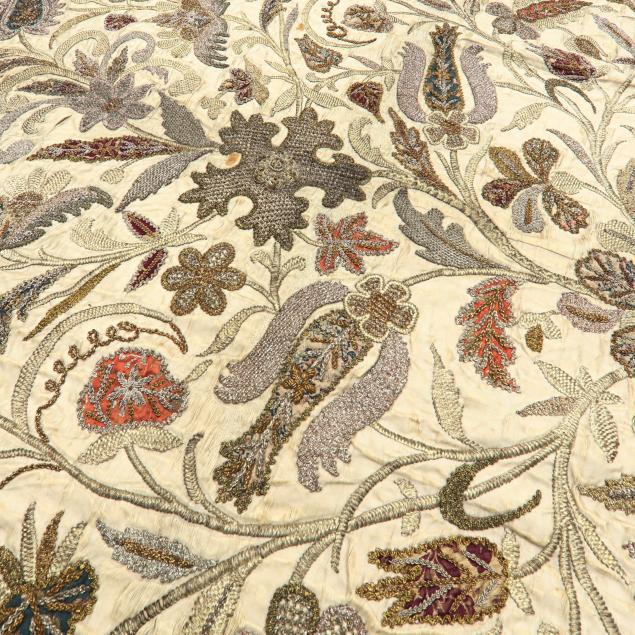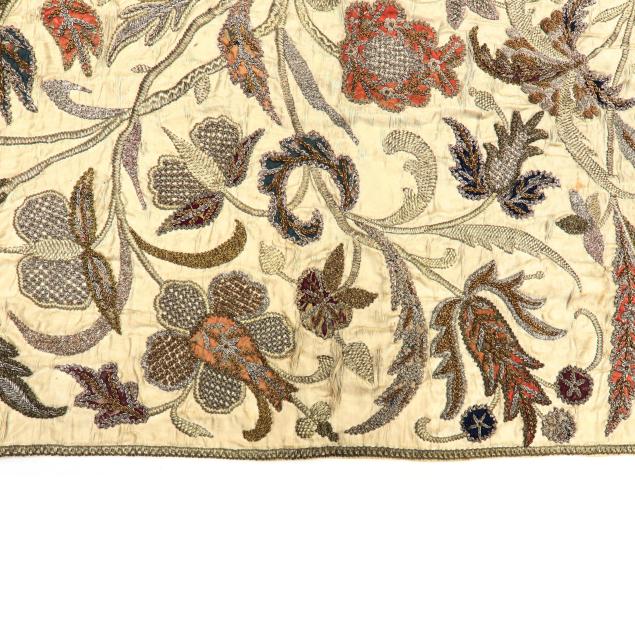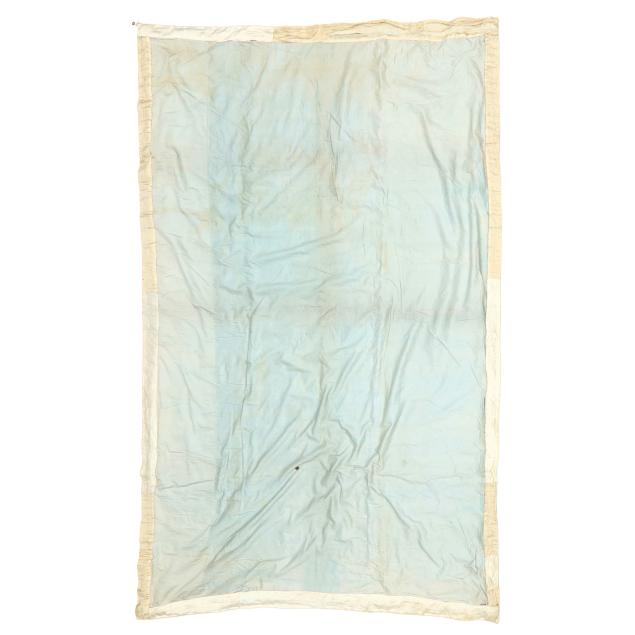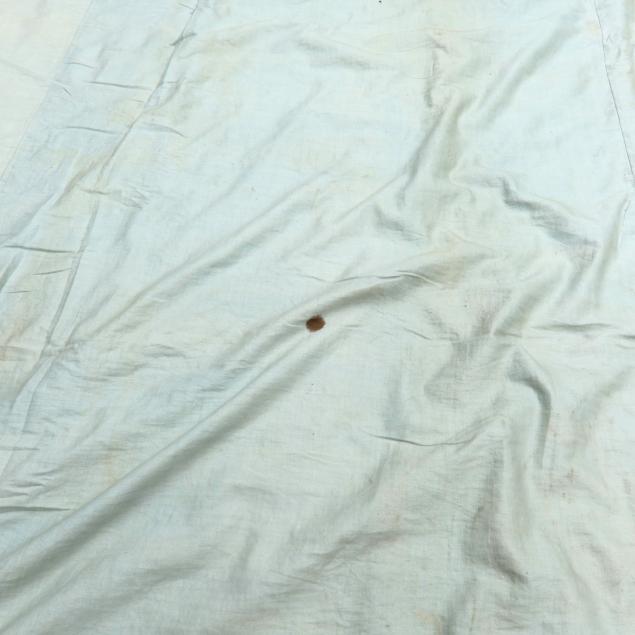
Lot 5035
Ottoman Goldwork Embroidered and Appliqué Panel
Explore more items like this one.
Visit our Rugs & Textiles Department Rugs & Textiles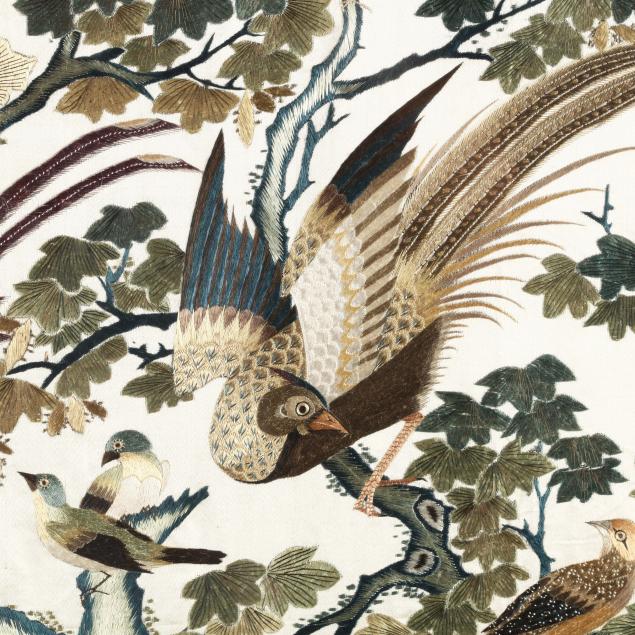
Lot Details & Additional Photographs
5 ft. 4 in. x 8 ft. 4 in.
As a comparison, a suberb example with a different subject matter but identical technique can be found in "A Highly Important Torah Ark Curtain, Ottoman Empire or Italy, 19th century" sold at Sotheby's, The Halpern Judaica Collection: Tradition and Treasure, Part 1, Lot 85, December 15, 2022. Scholarship on that piece points to an origin of either Turkey or Italy, and the catalogue states that there is, "striking evidence of the mutual influences and close connections between the Jewish communities of Italy and the Ottoman Empire fostered by continuous mercantile activity."
The East India Company began to bring elaborately printed cotton palampores to the European market from the Coromandel coast of India in the 17th century. These textiles most commonly featured the motif of a fruitful or floral tree springing from a rocky landscape. This tree of life motif has its origins in the artistic traditions of India, Persia, and China, and was adopted by Europe as a favorite motif as well, an icon of the interconnectedness of the textile trade during the age of exploration, and fit right in with the 18th century Western taste for chinoiserie and the exotic.
Aside from the Jewish piece mentioned above, panels such as this were also made for Islamic worship, with the same mihrab layout as a prayer carpet. (See Bonham's, London, November 12, 2024, Islamic and Indian Art, Lot 76, An Ottoman silk and metal-thread embroidered mihrab panel.)
This piece was likely made for the Western market or as a commission, probably a bed hanging and part of a larger suite. This silk and goldwork translation of a traditional cotton palampore design is a vibrant specimen of textile history, and the elevation of an iconic motif to something one of a kind.
Extensive shattering and fraying to silk; staining and discoloration; areas of old repair; otherwise the embroidery and goldwork is in excellent condition, and the fabrics have minimal fading.
